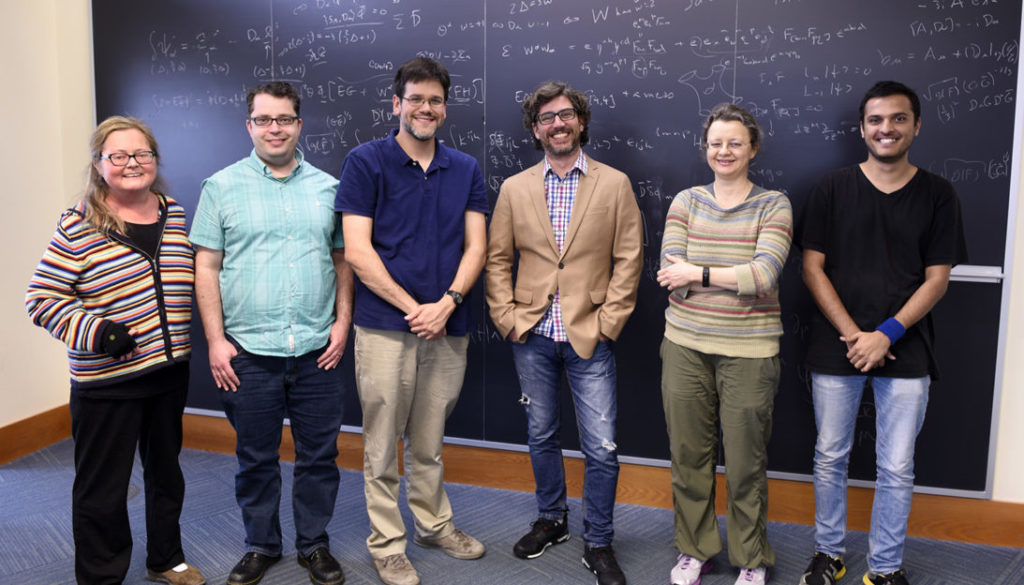Texas A&M String Sister Physicists Propose Kaluza-Klein Theory Without Truncation
COLLEGE STATION —
One of the most heated debates in science surrounds the existence of supersymmetry, a theoretical model of physics predicting that each known particle in the universe has an undiscovered partner particle. It’s a theory with legs in no small part because of its alluring potential to explain dark matter and dark energy, which jointly account for roughly 95 percent of the universe, and to tie together cosmology and particle physics at the earliest moments after the Big Bang.

Discovery of the Higgs boson plays a crucial role in providing proof of supersymmetry, an essential component of M-theory, which Texas A&M’s Melanie Becker describes “as the unique quantum theory of gravity that unifies all superstring theories into a single theory.” (Credit: CERN.) 
Dr. Katrin Becker 
Dr. Melanie Becker 
Melanie (left) and Katrin Becker, pictured in 2005 at Harvard University prior to coming to Texas A&M University. (Credit: Tony Rinaldo / Harvard University.)
The post Texas A&M Sister Physicists Propose Kaluza-Klein Theory Without Truncation appeared first on College of Science.




